
China
08:13, 19-Sep-2018
Reporter's Diary: Tibet's hidden jewels and beaming smiles
Updated
07:48, 22-Sep-2018
By Sim Sim Wissgott
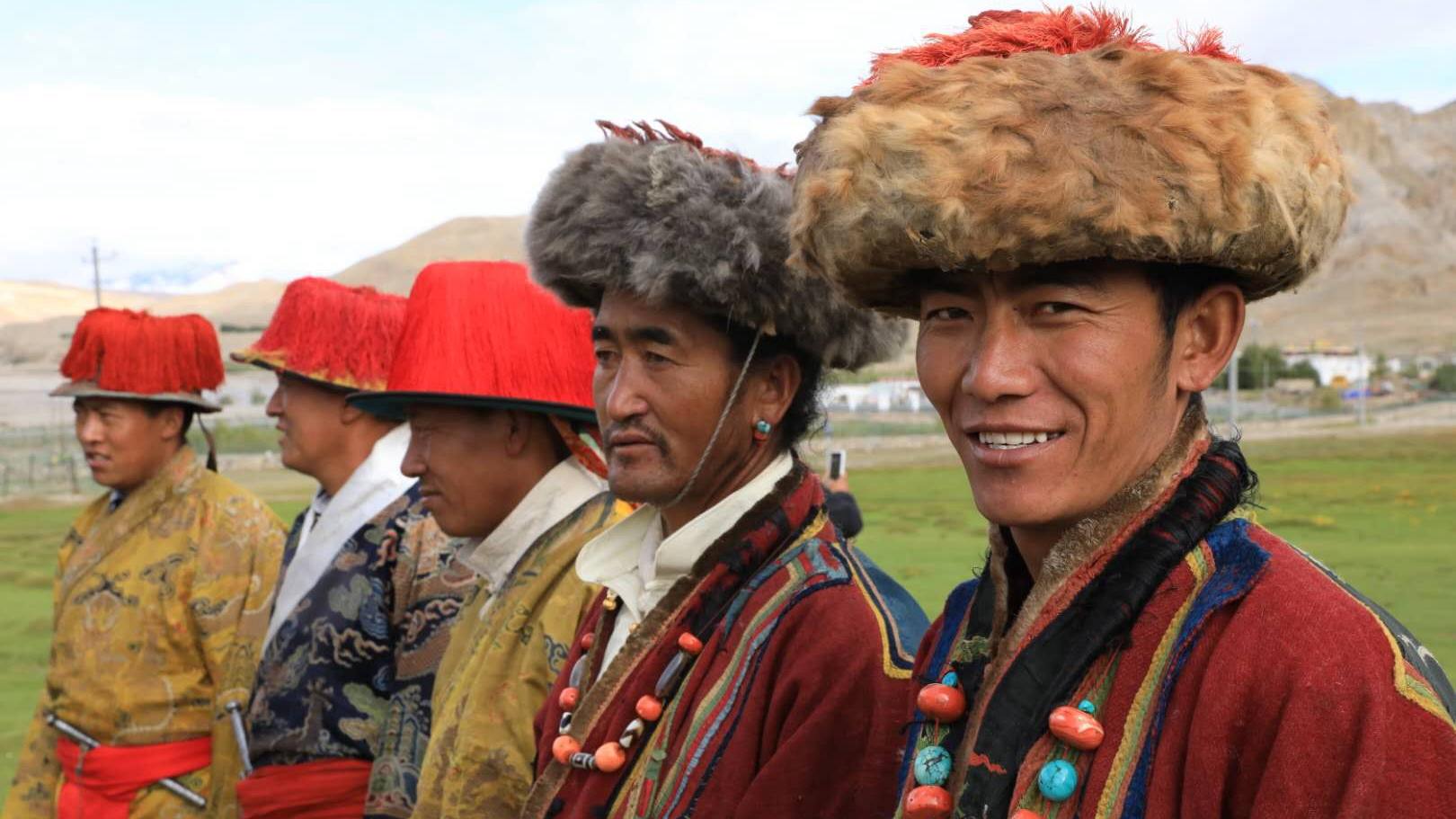
Growing up, my image of Tibet was of snowy Himalayan peaks, monks in burgundy robes and amusing yellow hats who could levitate, and yes, the Yeti. Let me explain: this picture came straight out of the comic book "Tintin in Tibet."
Obviously, that image evolved over the years but traveling through China's Tibet Autonomous Region for the first time was still an eye-opening experience.
We visited sights I'd never even heard of -- and I usually pride myself as being well-traveled.
We spent the best part of two weeks between 4,500 and 5,000 meters' altitude -- although I grew up in the Alps, I had never made it above 3,800 meters before.
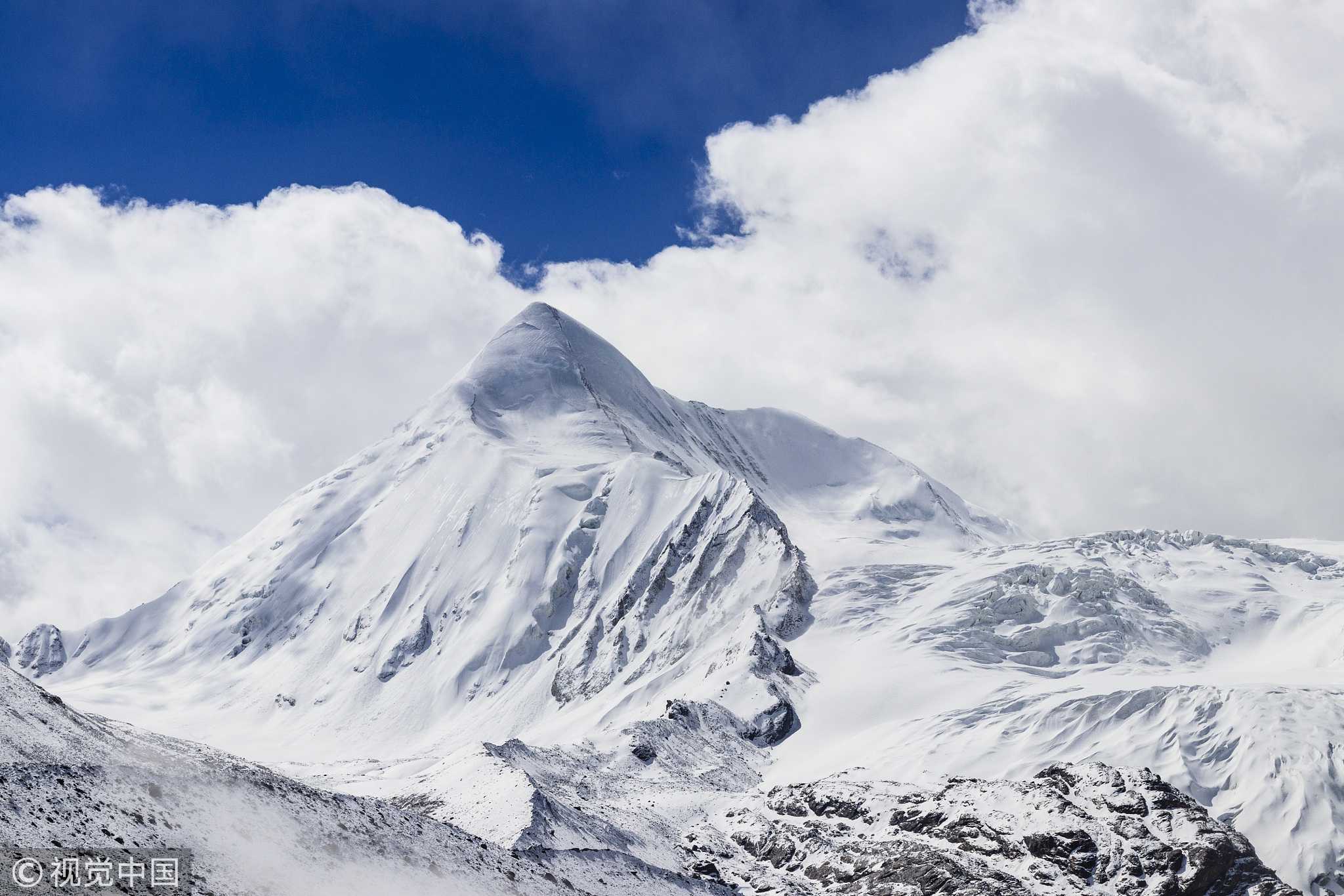
Snowy peaks in China's Tibet Autonomous Region /VCG Photo
Snowy peaks in China's Tibet Autonomous Region /VCG Photo
Ahead of the trip, there were plenty of tips from colleagues. Brace yourself for altitude sickness! Take it easy the first few days! Don't forget to bring sunscreen! And most daunting of all: prepare for the worst toilets you have ever seen! I will not elaborate on that last point, let's just say the reality was as bad as I'd feared.
It's rare nowadays to still be surprised by a place: every corner of the globe has been photographed for travel guides, documentaries and desktop wallpapers.
Western Tibet however was full of hidden treasures. There, the clouds hang low -- because the ground is much closer to the sky.
We saw temples with 1,000-year-old frescoes dating back to an ancient kingdom that has since disappeared, and visited a mountain-top fortress where inhabitants used to live in caves dug into the rock. It was enough to feel like Indiana Jones or some other intrepid explorer.
00:36
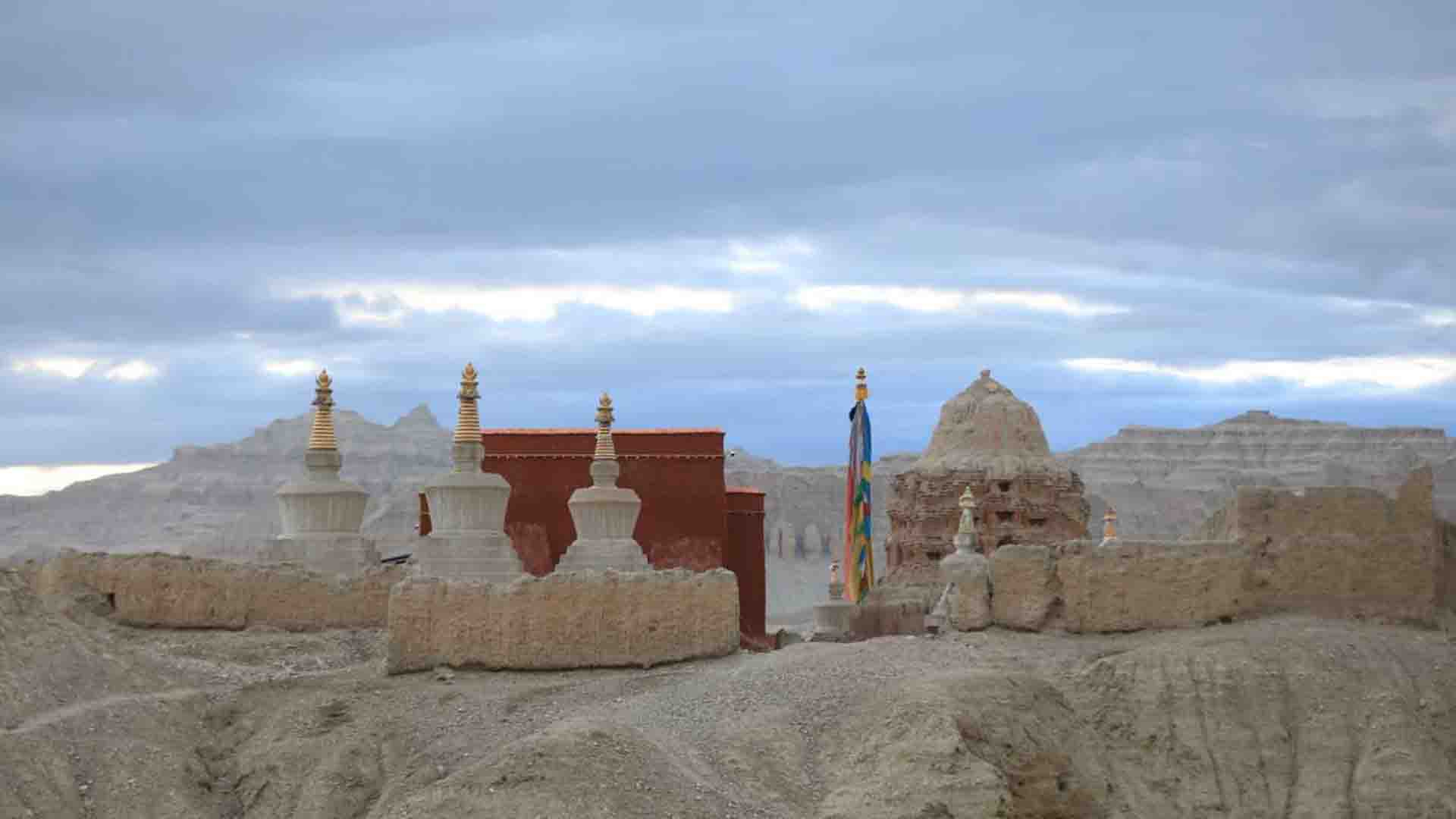
Guge Kingdom
From the 10th to 17th century, the ancient kingdom ruled over a large area in what is today Zanda County, southwest China's Tibet Autonomous Region. The ruins of the kingdom's capital, including cave-like dwellings and temples with frescoes dating back 1,000 years, can still be seen today.
But no matter how wonderful the landscapes, a place is defined by its people. And nobody will capture your heart as children do.
We visited a primary school in Burang County and while my colleagues interviewed the teachers and asked the kids about their hopes and dreams, I stood in the background, taking snapshots. A little boy sidled up to sneak a peek at the LED screen: "Pai zhao, pai zhao!" (Take a picture!), he said. I did, and then suggested all the children get together for a group photo.
It was like somebody had flipped a switch. In a second, these shy and quiet nine- and ten-year-olds turned into a tumbling, screaming mass of limbs and faces, jumping on top of each other and jostling to get in front of the camera.
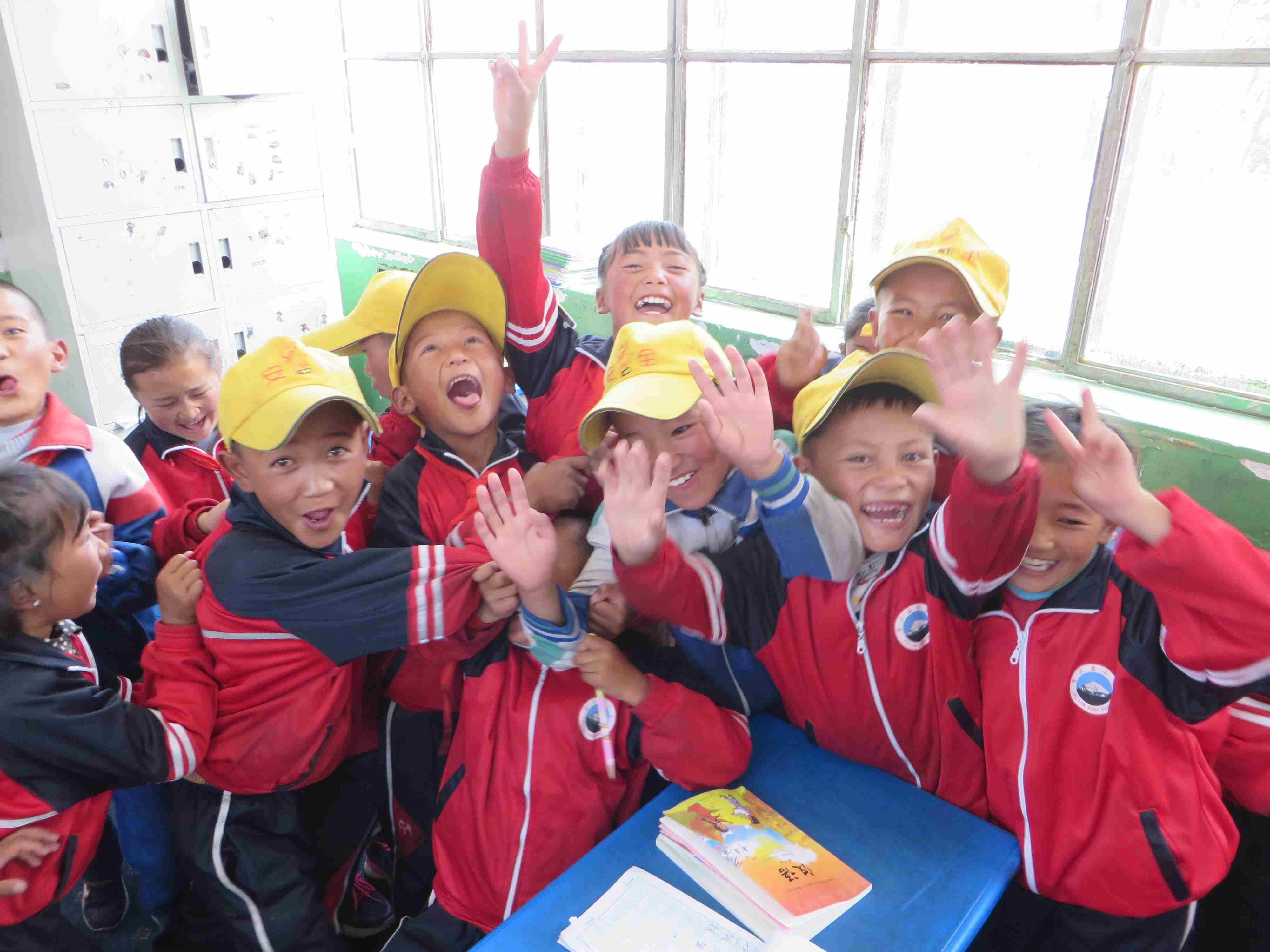
Pupils at a primary school in Burang County, Ngari Prefecture, China's Tibet Autonomous Region /Photo by Sim Sim Wissgott
Pupils at a primary school in Burang County, Ngari Prefecture, China's Tibet Autonomous Region /Photo by Sim Sim Wissgott
A few minutes later we got into a game of table tennis: CGTN reporters pitted against local Tibetan primary school kids. They trounced us, especially one boy, whose look of intense concentration morphed into a beaming smile when he sent the ball sailing past his opponent.
Few words were exchanged, and then in a mix of English, Tibetan and Mandarin. But you don't need to speak the same language to communicate.
So the Tibet we visited was nothing like the one depicted in my "Tintin" books. It was flatter -- fewer Himalayan peaks, more rolling hills, sand dunes, and arid landscapes. There was no snow -- at least not at our altitude -- and definitely no Yeti.
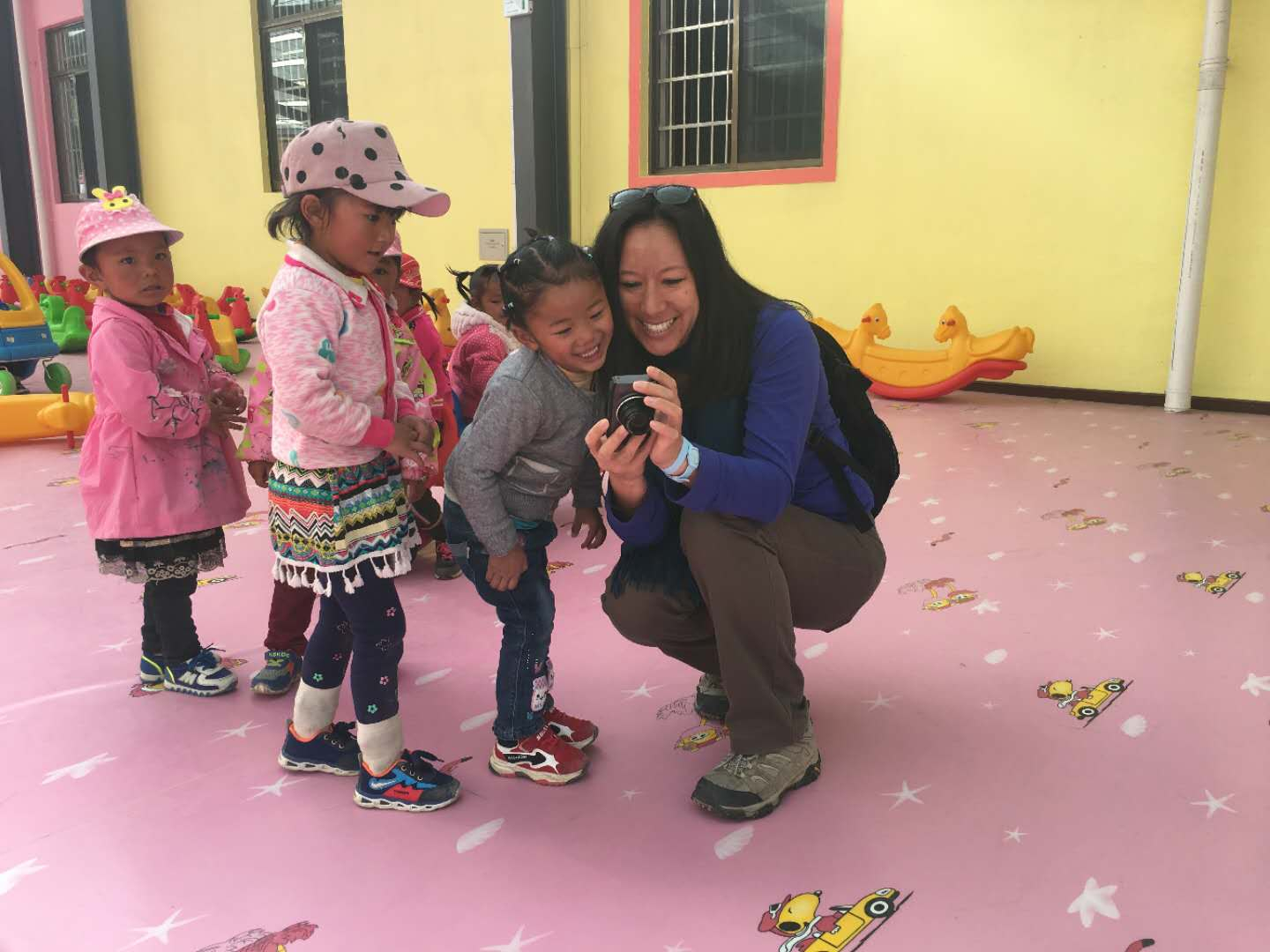
Visiting a kindergarten in Shiquanhe, Ngari Prefecture, Tibet Autonomous Region. /CGTN Photo
Visiting a kindergarten in Shiquanhe, Ngari Prefecture, Tibet Autonomous Region. /CGTN Photo
But I will remember the smiles and the friendliness of the Tibetan people, and some of the most unique landscapes I have ever seen.
And now I can say I played table tennis on the "Roof of the World."
3341km

SITEMAP
Copyright © 2018 CGTN. Beijing ICP prepared NO.16065310-3
Copyright © 2018 CGTN. Beijing ICP prepared NO.16065310-3